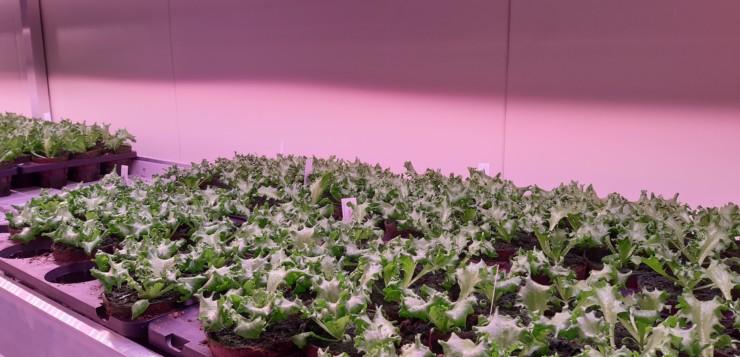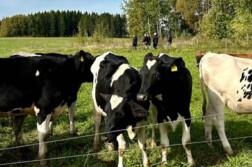There have been a lot of discussions, about how the energy crisis is affecting consumers. Recently, the impact of the price of energy on production has come up for discussion. Lassi Remes and Elina Vuori have written about it on Puutarha & Kauppa 14/2022.
On the Lepaa campus, we are cultivating tomatoes with assimilation light, from August to June. That is the same period as when our students are studying. In the period between November and 15th February natural light is not enough for cultivation. Lighting is also increasing the yield, outside of this period. The glasshouse, where tomatoes are growing, is built in 2007. Its gross area is 1 300 mᶾ.
In Northern-European glasshouses, we are optimizing climate to increase yields of tomatoes. Temperature, air humidity, light- level and CO2, are controlled by climate computers all the time. We are harvesting tomatoes 70 kg/m2/y. Optimizing the climate is an important way to keep energy consumption /tomato kg reasonably.
Total electricity consumption is 1 000 MWH/y, which is 770 kWh/m² and 11 kWh/kg. We are using wood chips for heating. Heat need varies year to year. Total heat consumption is between 600 – 780 MWH/y, which is 460 – 600 kWh/m2 and 6,5 – 8,5 kWh/kg.
The following aspects of the greenhouse have been taken into account to reduce energy consumption:
- Double energy screens on the roof, Ludvig Svesson 18 and Ludvig Svesson 10
- Roll up screens on the side walls
- Electronic HPS- lighting, 1,9 µmol/J
- Insulated sandwich panels in the north wall, 65 mm polyurethane
- Insulated plinth, 65 mm polyurethane
There is less information currently available about energy consumption in vertical farming. In the literature, it has been reported that electricity consumption is 10 kWh/kg of lettuce in the Finnish climate. It is also written, that in Japan total electricity consumption is about 2 kWh/head of lettuce. Normally lettuce is harvested in Japan when the weight is 50–80 g. It was not mentioned, what was average weight in this study. These numbers are not widely tested in commercial vertical farms in Finland.
Heat conduction through the walls and ceiling is not a problem, because the vertical farm is well insulated. This cultivating method is very dependent on electricity and electricity price. All assimilation light is coming from LED lighting. During the heating season, waste heat can be used for other buildings’ heating.
Electricity and natural gas prices have raised dramatically. Electricity prices are especially affecting Finnish glasshouse growers and vertical farming. Natural gas is not so important, because mainly glasshouses are heated by wood chips. Annual average electricity price in Nord Pool has been 2019 44 €/MWh vat 0 %, 2020 28 €/MWh vat 0 %, and 2021 72 €/MWh vat 0 %.
Today (5.9.) daily average market price in Nord Pool FI- area is 366 €/MWh vat 0 %. It is very likely, that when winter comes, the prices will rise. If the price is for example 400 €/MWh vat 0 % higher than last year, it will have a great influence on production cost. If we need 11 kWh to produce 1 kg of tomatoes. 40 c/kWh vat 0 % means that production costs are 4,4 €/kg vat 0 % higher than earlier.
We need at least 1 kWh of electricity to produce 100 g lettuce heads on a vertical farm. The need could also be much higher. It means that production costs are at least 0,4 €/lettuce head vat 0 % higher than earlier.
The key issue is latent heat. Tomato plants transpire a lot of water. Water vapor contains a lot of latent heat. If we would like to get energy consumption significantly lower level, we should solve this question. At the moment, glasshouse water vapor is condensing to glasses or is ventilated out. There are many technologies, that can at least partly solve this problem.
Because of the crisis, we are considering new energy-saving investments. New LED- lights are quite energy efficient. The energy efficiency could be better than 3 µmol/J. Using solar panels, it is possible to produce green electricity.
In spring 2023, we will know how much more the consumers are willing to pay for vegetables that have been grown with assimilation light. It is also always important to find high-value products.
Author:
Mika Järvinen, Research Services Manager, HAMK Bio




